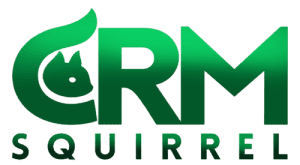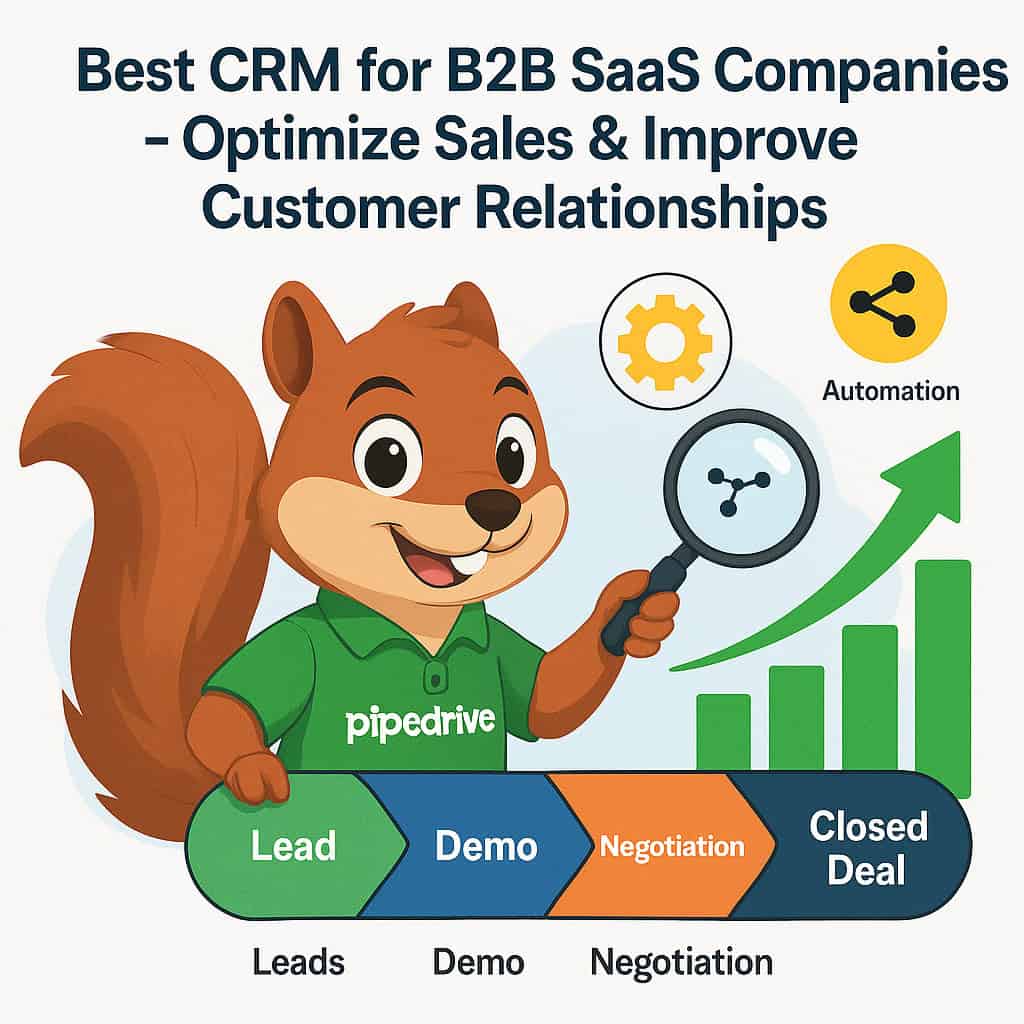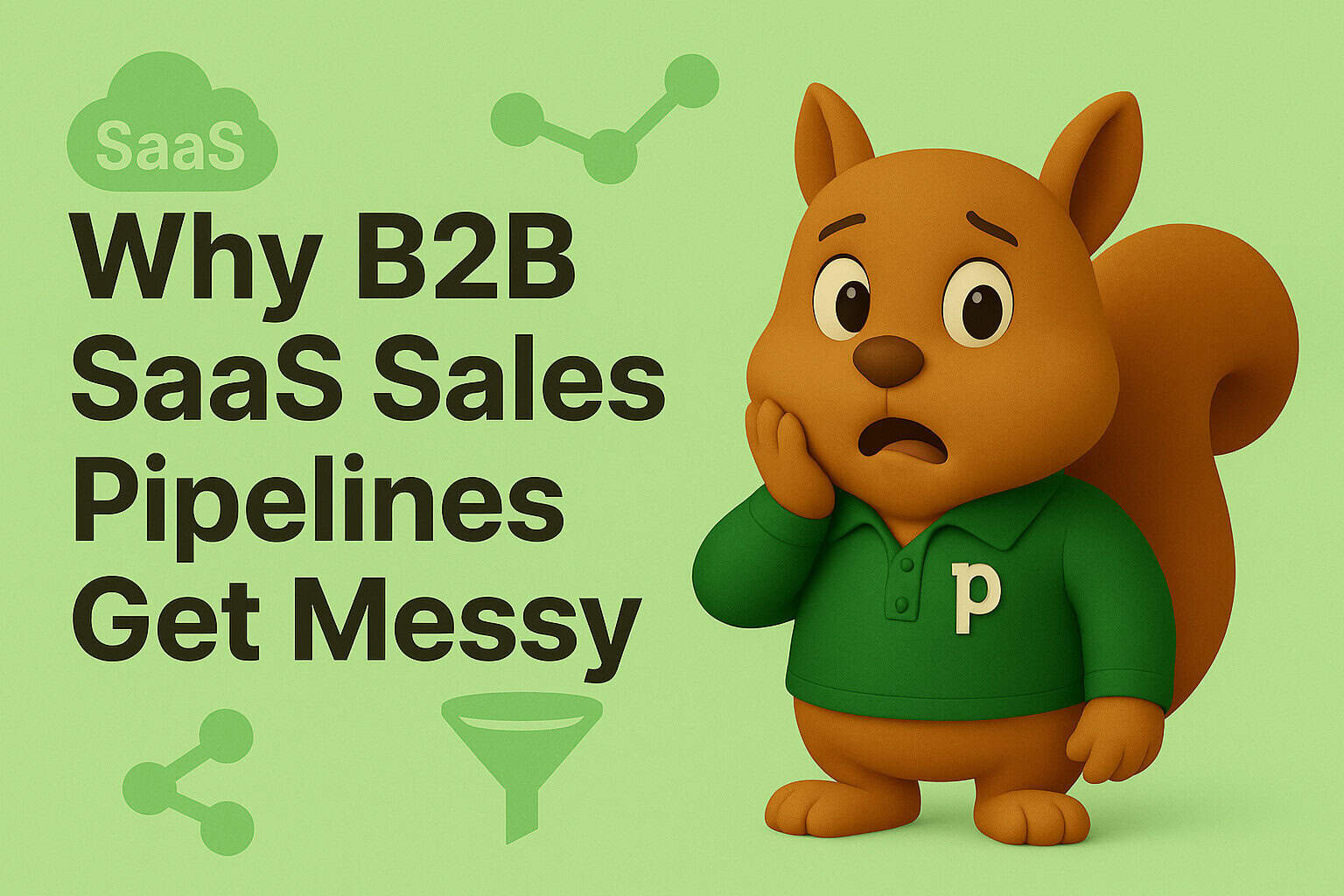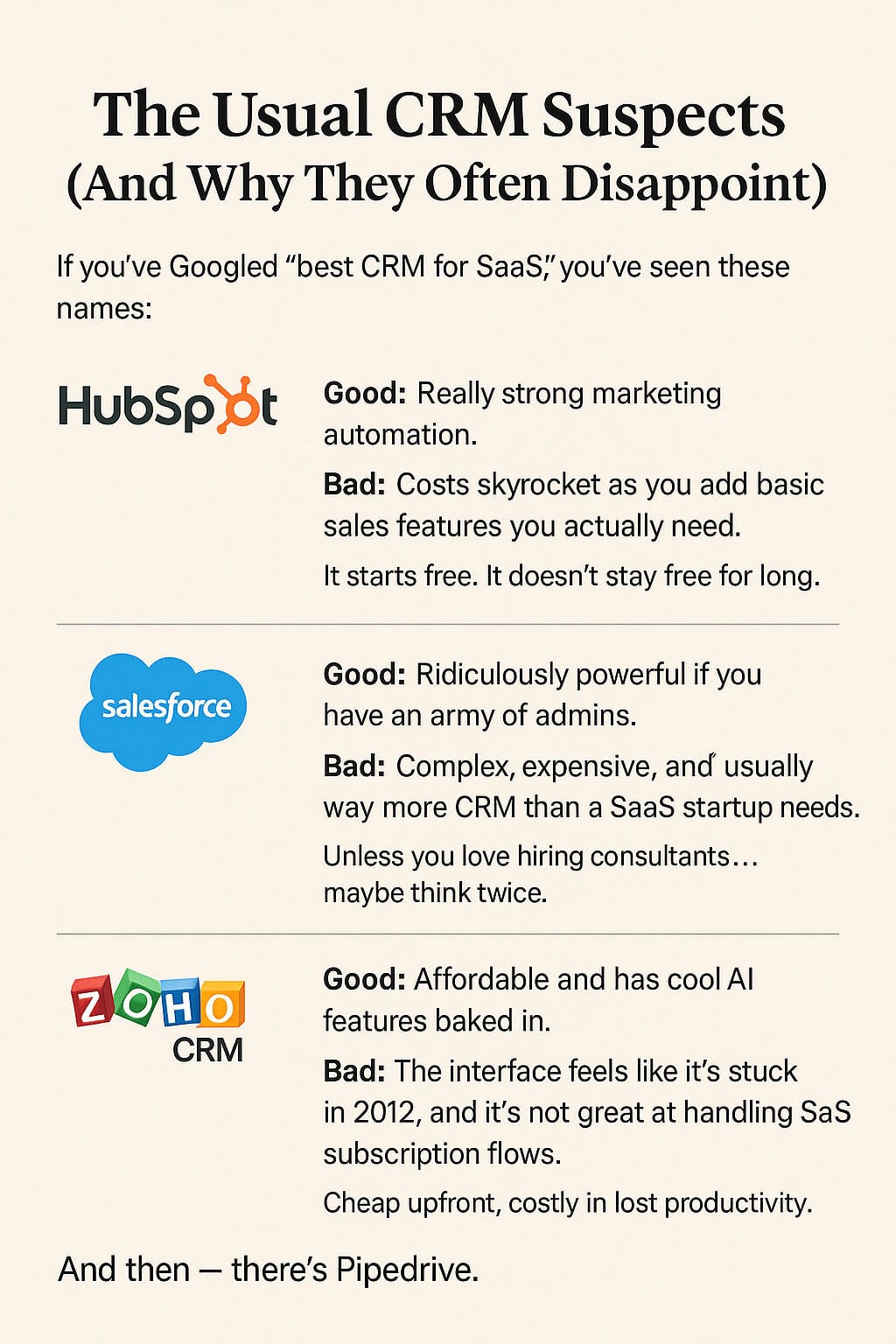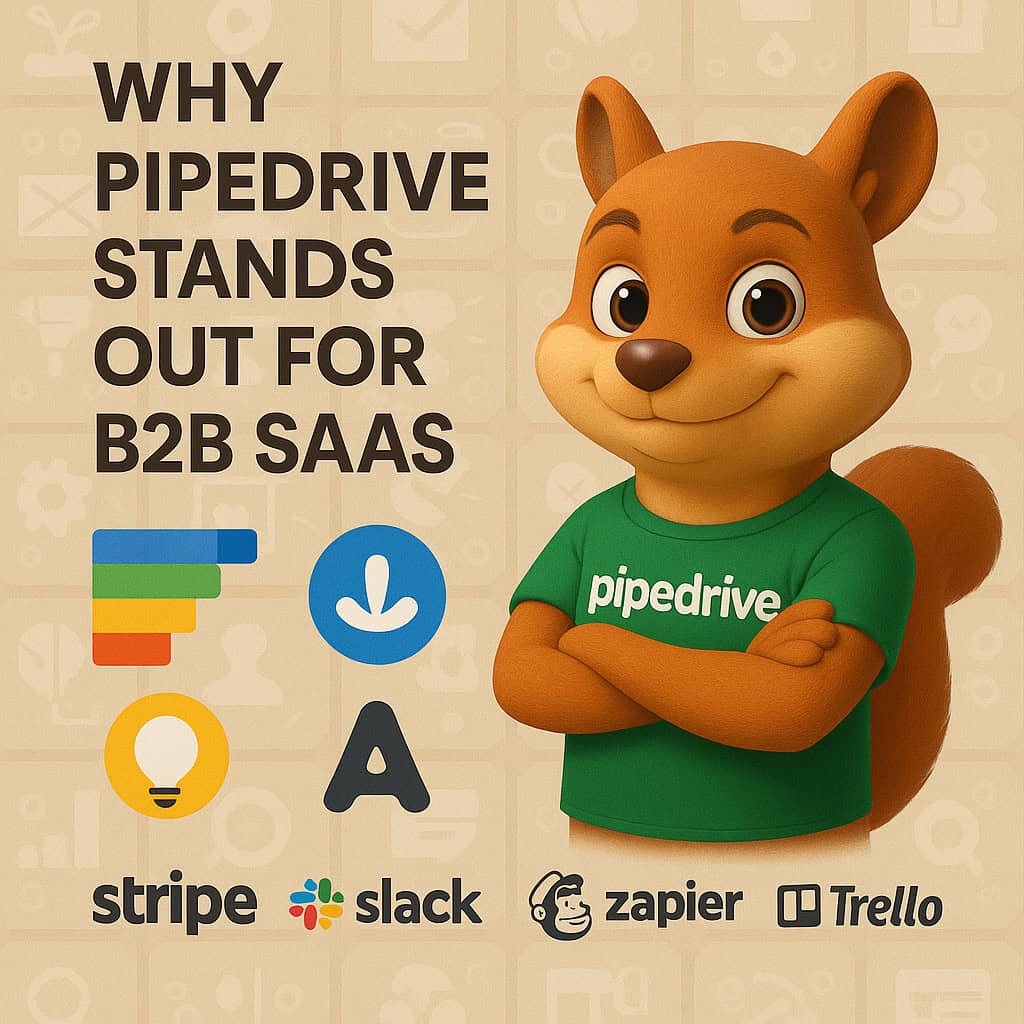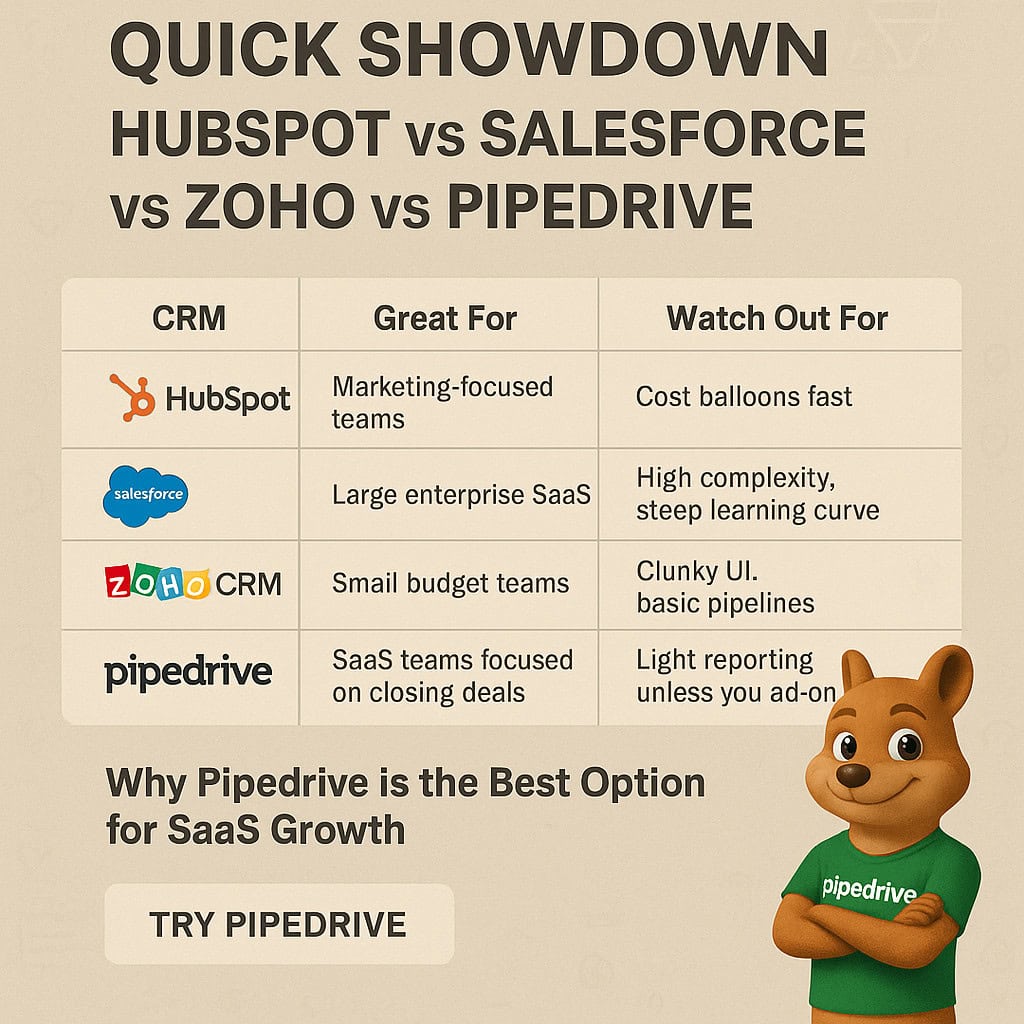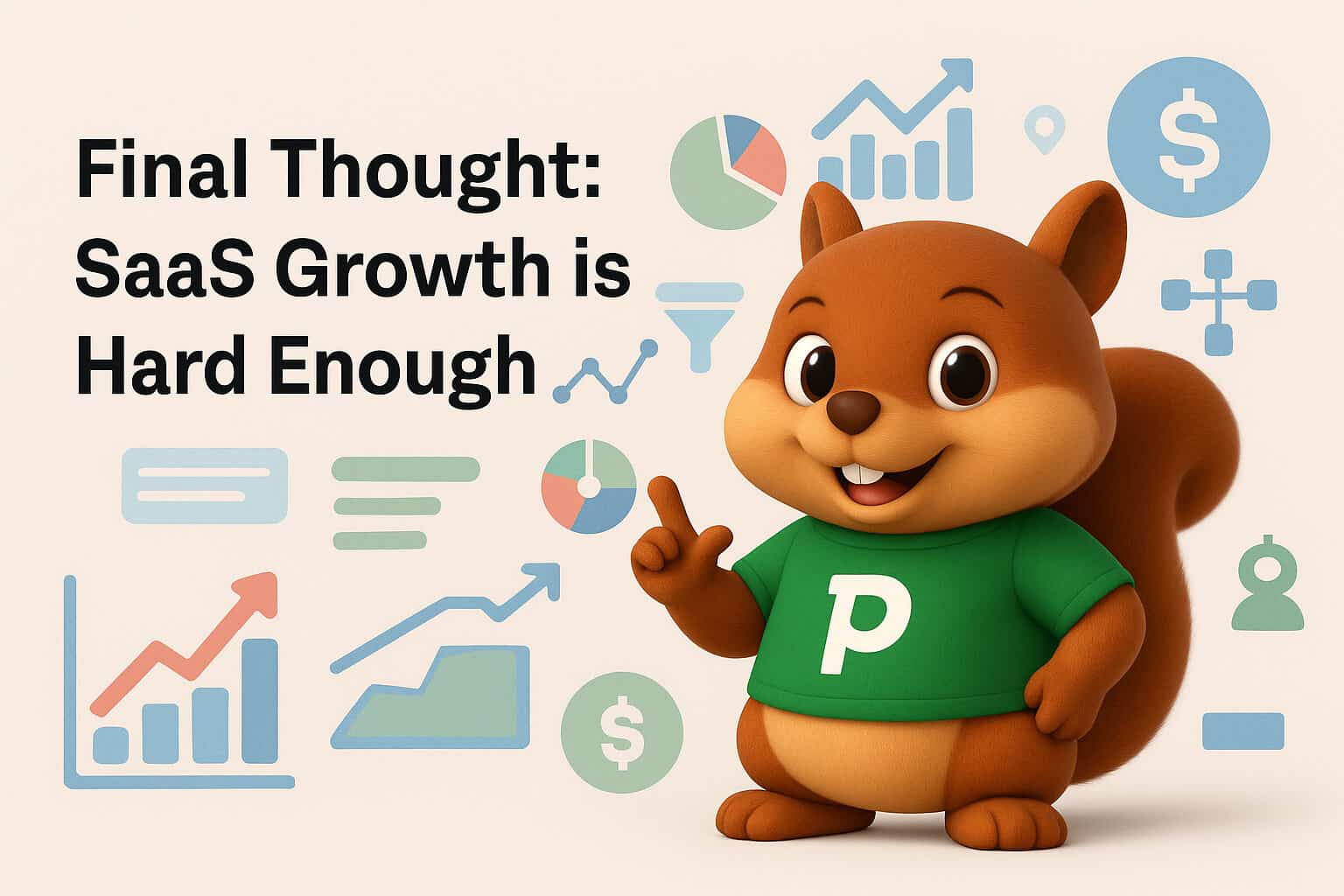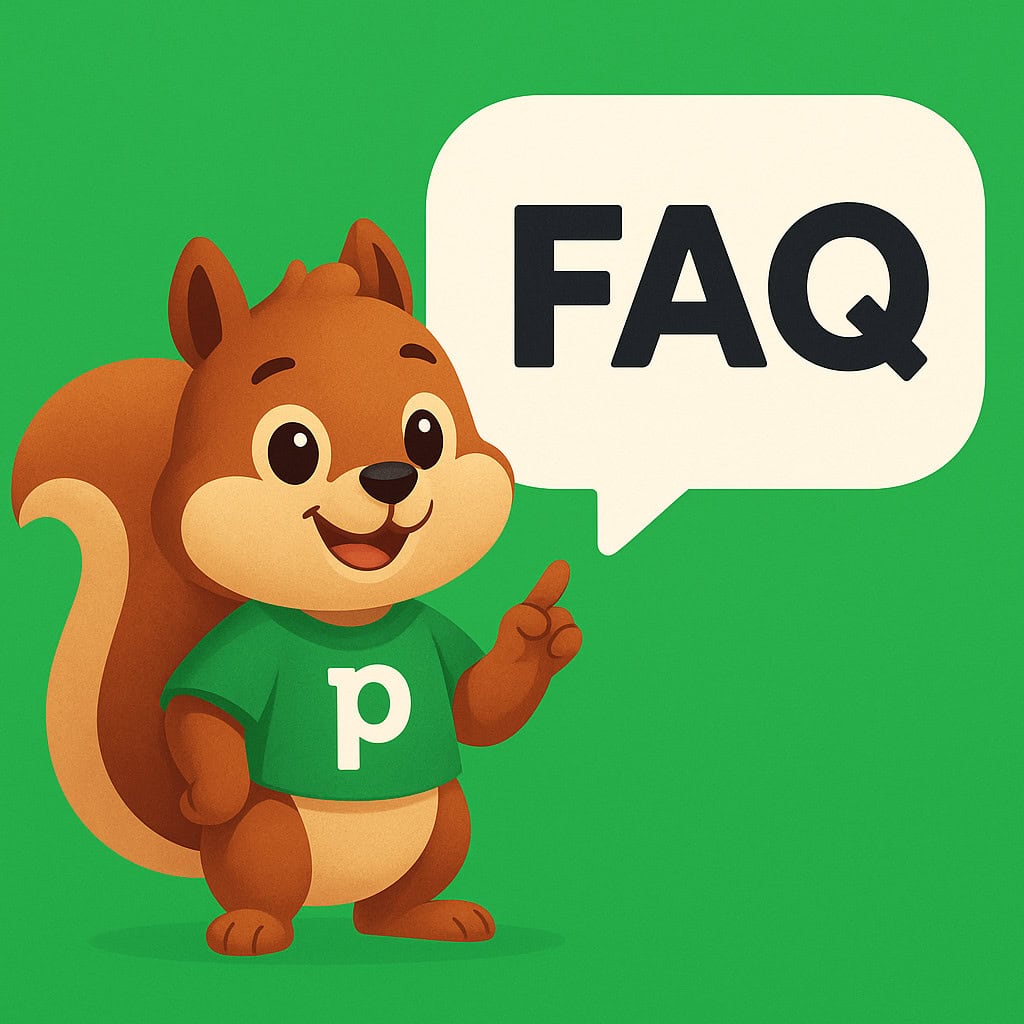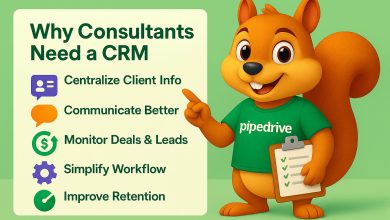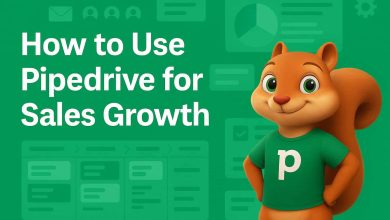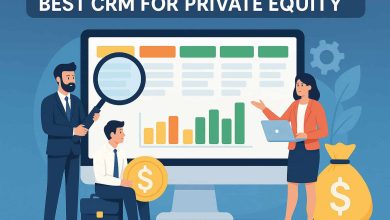Best CRM for B2B SaaS Companies – Optimize Sales & Improve Customer Relationships
You know what’s funny?
For all the buzz around SaaS growth hacks and fancy funnels, the thing that quietly makes or breaks a B2B SaaS company… is the CRM.
No exaggeration.
If your sales team can’t track leads, nurture relationships, and close deals at scale, you’re just hoping for good luck every month.
And hope is a terrible strategy.
In B2B SaaS, where deals are complex and recurring revenue is everything, having the right CRM isn’t optional — it’s survival.
It’s the difference between “we had a great quarter” and “why is churn killing us?”
Why B2B SaaS Sales Pipelines Get Messy (Even With a CRM)
Let’s be real for a second.
Most SaaS founders didn’t set out thinking,
“You know what would be cool? Managing a sales pipeline full of a hundred moving parts!”
And yet — here we are.
Even with a CRM, things go sideways fast:
Complex Sales Cycles (Good Luck Keeping Track Manually)
In B2B SaaS, closing a deal usually means dealing with 4–6 decision-makers, legal reviews, product demos, endless back-and-forth.
You can’t just “wing it” with sticky notes and optimism.
Without real structure, opportunities slip away silently.
Leads Falling Through the Cracks
A marketing campaign fires off.
A ton of sign-ups roll in.
Then someone forgets to follow up.
Or the handoff between marketing and sales is messy.
Or a good lead “was supposed to get a demo invite” but never did.
One small gap = lost revenue. Every time.
Data Overload (And Nobody Knows What It Means)
SaaS teams drown in metrics:
- Website clicks
- Trial signups
- Feature usage
- Email opens
But without a CRM that filters signal from noise?
It’s just white noise.
Busy dashboards that don’t help close deals.
Generic CRMs That Don’t Get SaaS
Some CRMs treat SaaS companies like real estate agents.
Seriously.
Managing a monthly renewal is very different from closing a one-off property sale.
SaaS needs custom pipelines for things like:
- Free trial to paid user transitions
- Churn risk management
- Customer success handoffs
A generic CRM just doesn’t cut it.
CRMs That Don’t Scale As You Grow
Early traction feels awesome… until your CRM setup starts breaking under the weight of 5x more leads and 10x more customer data.
If your CRM can’t flex with your team size and process changes, it stops being a solution — and becomes another bottleneck.
The Usual CRM Suspects (And Why They Often Disappoint)
If you’ve Googled “best CRM for SaaS,” you’ve seen these names:
HubSpot CRM
- Good: Really strong marketing automation.
- Bad: Costs skyrocket as you add basic sales features you actually need.
It starts free. It doesn’t stay free for long.
Salesforce
- Good: Ridiculously powerful if you have an army of admins.
- Bad: Complex, expensive, and usually way more CRM than a SaaS startup needs.
Unless you love hiring crm consultants… maybe think twice.
Zoho CRM
- Good: Affordable and has cool AI features baked in.
- Bad: The interface feels like it’s stuck in 2012, and it’s not great at handling SaaS subscription flows.
Cheap upfront, costly in lost productivity.
And then — there’s Pipedrive.
Why Pipedrive Stands Out for B2B SaaS (Like, Actually)
Let’s skip the marketing fluff.
Here’s why real SaaS teams stick with Pipedrive:
It’s Built Around Sales, Not Just Reporting
Pipedrive doesn’t try to be a “do-everything super app.”
It’s laser-focused on helping your team move deals forward, faster.
Visual pipelines you can actually understand at a glance.
Drag-and-drop simplicity.
AI nudges that say, “Hey, you forgot to follow up with John from Acme Corp.”
You know, the stuff that actually drives revenue.
Automation That Doesn’t Require a PhD
- New lead signs up? Auto-assign to a rep.
- Deal sits idle for a week? Trigger a check-in email.
- Renewal coming up? Remind Customer Success to reach out.
Set it once, let it run.
And bonus: you don’t need a technical wizard to set this up.
Customizable for Real SaaS Workflows
Want to track free trial signups separately from demo requests?
Easy.
Need to flag customers at high churn risk before renewals?
Done.
Pipedrive’s customization options let you mirror your actual customer journey — not force you into someone else’s process.
Integrates With What You Already Use
- Stripe
- Slack
- Zapier
- Mailchimp
- Zoom
- Trello
…and like 200+ other tools.
You’re not rebuilding your entire tech stack just to get CRM data flowing.
It Grows With You (Without Emptying Your Wallet)
Pipedrive doesn’t punish you for growing.
Their pricing stays reasonable even as you add seats, pipelines, and automations.
You don’t have to hit Series C funding before you can afford your CRM.
Quick Showdown: HubSpot vs Salesforce vs Zoho vs Pipedrive
| CRM | Great For | Watch Out For |
| HubSpot | Marketing-focused teams | Cost balloons fast |
| Salesforce | Large enterprise SaaS | High complexity, steep learning curve |
| Zoho CRM | Small budget teams | Clunky UI, basic pipelines |
| Pipedrive | SaaS teams focused on closing deals | Light reporting unless you add-ons |
So, Should You Bet on Pipedrive?
If your goal is to:
- Close more deals faster
- Build a pipeline that doesn’t leak
- Scale without CRM drama
…then yes.
Absolutely.
Pipedrive hits the sweet spot between “easy enough for reps to love” and “powerful enough to support scaling SaaS sales.”
SaaS Is Already Complicated — Your CRM Shouldn’t Be
Let’s face it — scaling a SaaS company is a grind.
You’re navigating long sales cycles, complex demos, high churn risk, and a market that never sits still.
The last thing you need? A CRM that creates more problems than it solves.
You don’t need endless dashboards you’ll never use.
You don’t need a full-time admin just to update your pipeline.
And you definitely don’t need software that takes longer to learn than your own product.
You need something lean.
- Visual.
- Actionable.
- Built to help your sales team sell — not slow them down.
That’s why Pipedrive hits different.
No, it’s not the most “enterprise” tool on the market.
But that’s the point.
Pipedrive gives SaaS teams a clear sales pipeline, real automation, and powerful integrations — without burying you under complexity.
It’s built for startups and scale-ups that need results, not headaches.
If your team needs more closing, less clicking — give Pipedrive a try.
Because in SaaS, momentum matters.
And a clean CRM is one of the best growth multipliers you can have.
FAQ: Best CRM for B2B SaaS Companies
1. What makes Pipedrive better for SaaS than other CRMs like Salesforce or HubSpot?
Pipedrive is built for speed and simplicity.
Unlike enterprise CRMs that require months of setup and training, Pipedrive gives SaaS teams a clear pipeline view, fast onboarding, and just enough features to stay productive — without the bloat.
It’s a better fit for growing SaaS companies that need agility more than bells and whistles.
2. Can Pipedrive handle recurring revenue or subscription-based workflows?
Yes — while Pipedrive isn’t built specifically for SaaS billing, it can be customized with stages, custom fields, and integrations (like Stripe or Chargebee) to reflect your subscription model.
With a smart setup, it’s easy to track renewals, upgrades, churn risks, and upsell opportunities in your pipeline.
3. How easy is it to integrate Pipedrive with other tools in our SaaS stack?
Very easy. Pipedrive connects with hundreds of tools out-of-the-box (like Slack, Google Workspace, Zoom, and Mailchimp), and deeper workflows can be automated with platforms like Zapier or Make.
Whether you’re syncing with Stripe, Intercom, or your email marketing platform, integration is straightforward — no dev team needed.
